Rated & Reviewed is reader-supported. When you buy through links on our site, we may earn an affiliate commission. Learn more.
Introduction to Outdoor Pizza Ovens
Outdoor pizza ovens have become increasingly popular among home chefs and pizza enthusiasts. These specialized ovens offer a unique cooking experience that can elevate your pizza-making game to new heights. Here, we will explore different aspects of outdoor pizza ovens, including types, benefits, and factors to consider when choosing one for your backyard or patio.
Types of Outdoor Pizza Ovens
- Wood-fired Pizza Ovens: These traditional ovens use wood as the primary fuel source, providing an authentic cooking experience. The wood fire generates intense heat, creating a distinct smoky flavor and crispy crust.
- Gas Pizza Ovens: Gas-fired pizza ovens offer convenience and ease of use. They utilize gas burners to generate heat quickly and efficiently. With precise temperature control, gas ovens provide consistent results for your pizzas.
- Pellet Pizza Ovens: Pellet ovens combine the convenience of gas ovens with the flavor of wood-fired ones. They use compressed wood pellets as fuel, providing both convenience and the unique smoky taste associated with wood-fired cooking.
Benefits of Outdoor Pizza Ovens
- Superior Flavor: Outdoor pizza ovens reach high temperatures, typically exceeding 800°F (427°C), allowing pizzas to cook quickly and evenly. This intense heat creates a perfectly crisp crust while sealing in the flavors and moisture of the toppings.
- Versatility: In addition to pizzas, outdoor pizza ovens can be used to cook a wide variety of dishes. From bread and roasted vegetables to meats and desserts, these ovens offer versatility in outdoor cooking.
- Enhanced Social Experience: Cooking with an outdoor pizza oven can be a social and interactive experience. It provides a focal point for gatherings and allows guests to participate in the pizza-making process, creating a memorable and enjoyable atmosphere.
Factors to Consider
When selecting an outdoor pizza oven, several factors should be taken into account:
- Size: Consider the available space in your outdoor area and choose an oven that fits comfortably without overcrowding. Smaller ovens are suitable for personal use, while larger ones accommodate multiple pizzas at once.
- Fuel Type: Decide on the fuel type that aligns with your preferences. Wood-fired ovens offer a traditional taste, gas ovens provide convenience, and pellet ovens offer a balance between the two.
- Materials: Look for ovens constructed with durable and high-quality materials, such as stainless steel, refractory bricks, or cast iron. These materials ensure the longevity and performance of the oven.
- Budget: Determine your budget range and explore options within that range. Outdoor pizza ovens can vary significantly in price, so consider the features and quality that best suit your needs.
By understanding the types of outdoor pizza ovens, their benefits, and the factors to consider when choosing one, you can make an informed decision to select the perfect oven for your outdoor culinary adventures. Let’s dive into the next section to learn how to properly season and maintain your outdoor pizza oven.
Seasoning and Maintaining Your Outdoor Pizza Oven
To ensure optimal performance and longevity of your outdoor pizza oven, proper seasoning and maintenance are essential. Seasoning involves preparing the oven for use by creating a protective layer on the interior surfaces, while regular maintenance helps keep the oven clean and in top condition. Let’s explore the steps for seasoning your oven and some maintenance tips to follow.
Seasoning Your Outdoor Pizza Oven
- Preparation: Before starting the seasoning process, ensure that your oven is clean and free from any debris or residues. Remove any ashes or leftover wood from previous uses.
- Applying a Base Coat: Mix a solution of water and salt to create a paste-like consistency. Apply this mixture to the interior surfaces of the oven using a brush or cloth. Make sure to cover the entire interior, including the walls, floor, and ceiling.
- Building Fires: Start with small fires to gradually increase the temperature. The first few fires should be low and slow, allowing the salt mixture to dry and form a protective layer. Gradually increase the fire size and temperature over a few sessions to complete the seasoning process.
- Repeating the Process: For optimal results, it is recommended to repeat the seasoning process several times, allowing the protective layer to build up. Each time, use less salt in the mixture until you only use water. This helps prevent an excessive salt buildup.
- Cooling and Cleaning: After the seasoning process, allow the oven to cool completely. Once cooled, use a brush or cloth to remove any remaining salt residue. Dispose of the ashes and clean the oven thoroughly, ready for use.
Maintaining Your Outdoor Pizza Oven
- Regular Cleaning: After each use, remove any leftover ash or debris from the oven. Use a brush or cloth to wipe down the interior surfaces, ensuring they are free from any food particles. Cleaning the oven regularly prevents the buildup of residues that can affect the taste of your pizzas.
- Inspecting for Damage: Periodically inspect the oven for any signs of damage, such as cracks, loose bricks, or deteriorating insulation. Promptly address any issues to prevent further damage and ensure the oven’s efficiency.
- Protective Covers: Consider using a protective cover when the oven is not in use to shield it from the elements. This helps prevent moisture from seeping into the oven, which can cause damage over time.
- Avoiding Abrasive Cleaners: When cleaning the oven, avoid using abrasive cleaners or tools that can damage the interior surfaces. Instead, opt for mild dish soap and warm water or specialized oven cleaning products recommended by the manufacturer.
- Regular Usage: Regularly using your outdoor pizza oven helps maintain its performance and condition. The high temperatures reached during cooking help burn off any residual oils or contaminants, keeping the oven clean and seasoned.
By following the proper seasoning process and implementing regular maintenance, you can ensure that your outdoor pizza oven remains in optimal condition, providing you with delicious pizzas for years to come. In the next section, we will delve into best practices for using an outdoor pizza oven, including tips for achieving the perfect crust and toppings.
Best Practices for Using an Outdoor Pizza Oven
Using an outdoor pizza oven requires some techniques and knowledge to achieve the best results. From preheating the oven to mastering the art of crust and toppings, here are some best practices to follow for a successful pizza-making experience.
Preheating the Oven
- Allow Sufficient Preheating Time: Outdoor pizza ovens require ample time to reach the desired temperature. Depending on the type of oven and the recipe, preheating can take anywhere from 30 minutes to a couple of hours. Follow the manufacturer’s instructions or recipe guidelines for the recommended preheating time.
- Monitor the Temperature: Use an oven thermometer to accurately gauge the temperature inside the oven. This helps ensure that the oven reaches the optimal temperature for the style of pizza you are making. Adjust the fire or fuel supply as needed to maintain a consistent temperature throughout the cooking process.
Achieving the Perfect Crust
- Use High-Quality Flour: Choose a high-protein flour, such as bread flour or tipo “00” flour, for a chewy and elastic crust. These flours have a higher gluten content, which contributes to a better rise and texture.
- Proper Dough Preparation: Follow a trusted pizza dough recipe and pay attention to the mixing, kneading, and proofing processes. Allow the dough to rise adequately to develop flavor and texture.
- Stretching Techniques: When stretching the dough, be gentle and avoid using excessive force. Use your fingertips to press and stretch the dough from the center outward, allowing it to naturally expand while maintaining an even thickness.
- The Right Thickness: Aim for a thin and even crust, as it cooks more quickly and evenly in the high heat of the outdoor oven. Too thick of a crust may result in an undercooked center or burnt edges.
- Using a Pizza Stone or Peel: Place a pizza stone or a preheated pizza peel on the oven floor before sliding the pizza onto it. This helps transfer the heat evenly to the crust, promoting a crispy bottom.
Perfecting Toppings and Cooking Techniques
- Simplicity is Key: Opt for a few high-quality ingredients that complement each other. Overloading the pizza with too many toppings can lead to a soggy crust and uneven cooking.
- Precook Certain Ingredients: For ingredients that require longer cooking times or contain excess moisture, such as raw meats or vegetables, precook them partially before adding them to the pizza. This ensures that they cook through without making the crust soggy.
- Evenly Distribute Toppings: Spread the sauce and toppings evenly across the pizza to ensure uniform cooking. Avoid piling toppings too close to the edges, as they may burn before the center of the pizza is fully cooked.
- Rotating the Pizza: To achieve even cooking, rotate the pizza periodically using a peel or a long-handled spatula. This helps prevent hot spots and ensures a consistent browning of the crust.
- Monitoring Cooking Time: Keep a close eye on the pizza while it cooks, as the high heat of outdoor ovens can result in quick cooking times. Refer to recipe guidelines and visually inspect the crust for desired doneness.
By following these best practices, you can elevate your outdoor pizza oven skills and consistently achieve delicious pizzas with the perfect crust and well-balanced toppings. In the next section, we will explore how to choose the right pizza dough and toppings for your outdoor pizza oven.
Choosing the Right Pizza Dough and Toppings for Your Outdoor Pizza Oven
When it comes to outdoor pizza oven cooking, choosing the right pizza dough and toppings is crucial for achieving delicious and perfectly cooked pizzas. The type of dough and the selection of toppings can greatly impact the flavor, texture, and overall quality of your pizza. Here are some considerations to help you make the right choices.
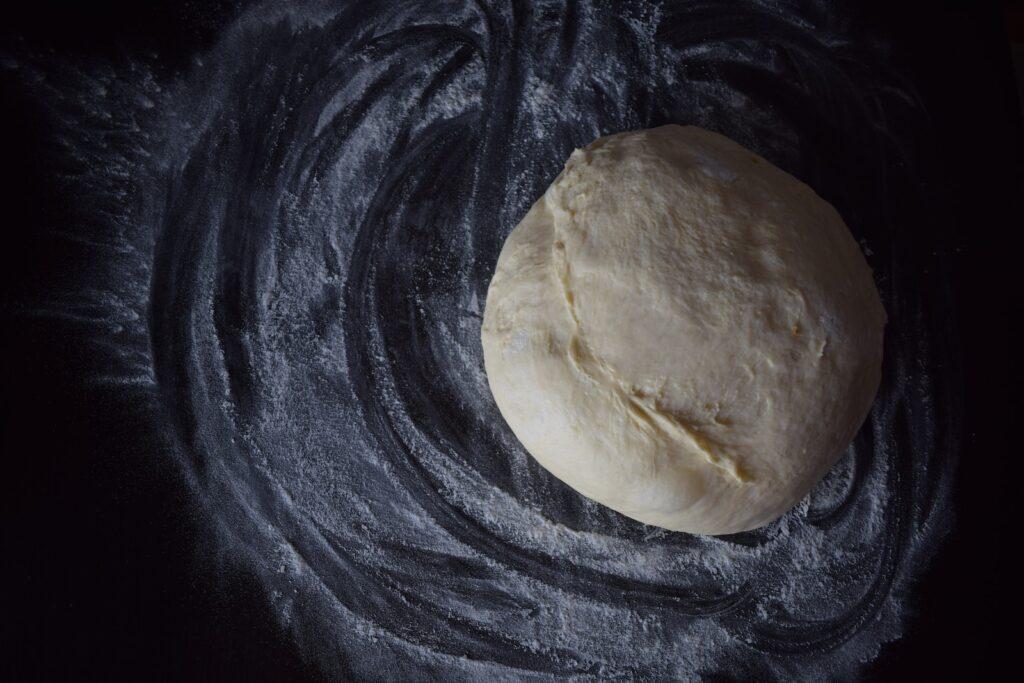
Selecting the Pizza Dough
- Dough Consistency: Opt for a dough recipe that is specifically formulated for thin crust pizzas. These doughs are typically lighter and more elastic, making them ideal for quick cooking in the high heat of an outdoor pizza oven. Look for recipes that specify “Neapolitan-style” or “thin crust” for best results.
- Flour Type: High-protein flours, such as bread flour or tipo “00” flour, are commonly used for pizza dough. These flours have a higher gluten content, resulting in a chewier and more elastic crust. Experiment with different flours to find the one that suits your taste preferences.
- Proofing Time: Properly proofing the dough allows it to develop flavor and texture. Follow the recommended proofing time specified in the recipe you are using. In general, a longer proofing time at a slightly lower temperature can result in a more flavorful crust.
Choosing Pizza Toppings
- Fresh and High-Quality Ingredients: Opt for fresh and high-quality ingredients to enhance the flavor of your pizzas. Use ripe and juicy tomatoes for the sauce, flavorful cheeses, and fresh herbs. Experiment with locally sourced or seasonal ingredients for unique flavor combinations.
- Balance and Complement: Consider a balance of flavors and textures when selecting toppings. Combine ingredients that complement each other well. For example, the creaminess of mozzarella cheese pairs well with the saltiness of cured meats like prosciutto, while fresh basil adds a vibrant and herbaceous note.
- Precook Certain Ingredients: To ensure that all the toppings cook evenly, precook certain ingredients if needed. Raw meats, such as chicken or sausage, should be fully cooked before adding them to the pizza. Additionally, vegetables with high water content, such as mushrooms or zucchini, can be pre-sautéed to reduce their moisture.
- Mind the Quantity: Avoid overloading your pizza with toppings, as it can lead to an unbalanced and soggy result. A moderate amount of toppings ensures that each ingredient cooks properly and allows the flavors to shine.
- Herbs and Seasonings: Don’t forget to add fresh herbs, spices, and seasonings to enhance the overall taste of your pizza. Basil, oregano, garlic, red pepper flakes, and olive oil are popular choices that can elevate the flavor profile of your pizzas.
Remember, the choice of pizza dough and toppings is a matter of personal preference. Experiment with different combinations to find your favorite flavors and textures. Don’t be afraid to get creative and have fun with your pizza creations.
In the next section, we will delve into the difference between Neapolitan-style pizza and American-style pizza, discussing which one is best suited for outdoor pizza ovens.
Neapolitan-Style Pizza vs. American-Style Pizza: Suitability for Outdoor Pizza Ovens
Neapolitan-style pizza and American-style pizza are two popular pizza variations, each with its own distinct characteristics. Understanding the differences between these styles can help you determine which one is best suited for cooking in an outdoor pizza oven.
Neapolitan-Style Pizza
- Origin and Tradition: Neapolitan-style pizza originated in Naples, Italy, and is deeply rooted in tradition. It follows strict guidelines, including specific ingredients and preparation methods, to create an authentic Neapolitan pizza.
- Crust: Neapolitan-style pizza features a thin, soft, and chewy crust with a slightly charred exterior. The dough is traditionally made with only four ingredients: flour, water, salt, and yeast. It undergoes a long fermentation process, resulting in a light and airy texture.
- Toppings: Neapolitan-style pizza emphasizes simplicity and high-quality ingredients. It typically features minimal toppings, such as San Marzano tomatoes, fresh mozzarella cheese, basil, and extra-virgin olive oil.
- Cooking Technique: Neapolitan-style pizza is cooked quickly at high temperatures, usually around 800°F (427°C), in a wood-fired oven. The high heat creates a blistered crust and cooks the pizza in just a few minutes.
American-Style Pizza
- Variety and Creativity: American-style pizza offers more flexibility in terms of toppings and flavor combinations. It allows for a wide range of toppings, including meats, vegetables, and various cheeses, giving you the freedom to create unique and diverse pizzas.
- Crust: American-style pizza typically has a thicker and doughier crust compared to Neapolitan-style pizza. The dough may include additional ingredients such as sugar, oil, or herbs, resulting in a softer and more bread-like texture.
- Toppings: American-style pizza is known for its generous toppings, including a variety of meats, vegetables, and sauces. It embraces a mix of flavors and textures, often incorporating ingredients like pepperoni, sausage, bell peppers, onions, and different types of cheese.
- Cooking Technique: American-style pizza is commonly baked in gas or electric ovens at temperatures around 475°F (245°C) to 525°F (274°C). The longer cooking time allows the toppings to fully cook and develop flavors, resulting in a more evenly cooked pizza.
Suitability for Outdoor Pizza Ovens
Both Neapolitan-style and American-style pizzas can be cooked in outdoor pizza ovens, but the characteristics of each style may influence your preference:
- Neapolitan-style pizzas: The high heat and quick cooking time of outdoor pizza ovens make them well-suited for Neapolitan-style pizzas. The intense heat produces the signature charred crust and blistered edges, replicating the authentic Neapolitan experience.
- American-style pizzas: While outdoor pizza ovens can accommodate American-style pizzas, the lower temperatures may result in a slightly different texture and cooking time. However, you can still achieve delicious results by adjusting the cooking time and temperature to ensure the crust is cooked through and the toppings are nicely browned.
Ultimately, the choice between Neapolitan-style and American-style pizza for your outdoor pizza oven depends on your personal preference and desired pizza experience. Whether you prefer the simplicity and tradition of Neapolitan-style or the variety and creativity of American-style, your outdoor pizza oven can help you create mouthwatering pizzas that are sure to delight your taste buds.
In the next section, we will explore the benefits of using an outdoor pizza oven compared to a traditional indoor oven.
The Benefits of Using an Outdoor Pizza Oven Compared to a Traditional Indoor Oven
Using an outdoor pizza oven offers several distinct advantages over a traditional indoor oven when it comes to making delicious pizzas. Let’s explore the benefits that come with cooking pizzas in an outdoor pizza oven.
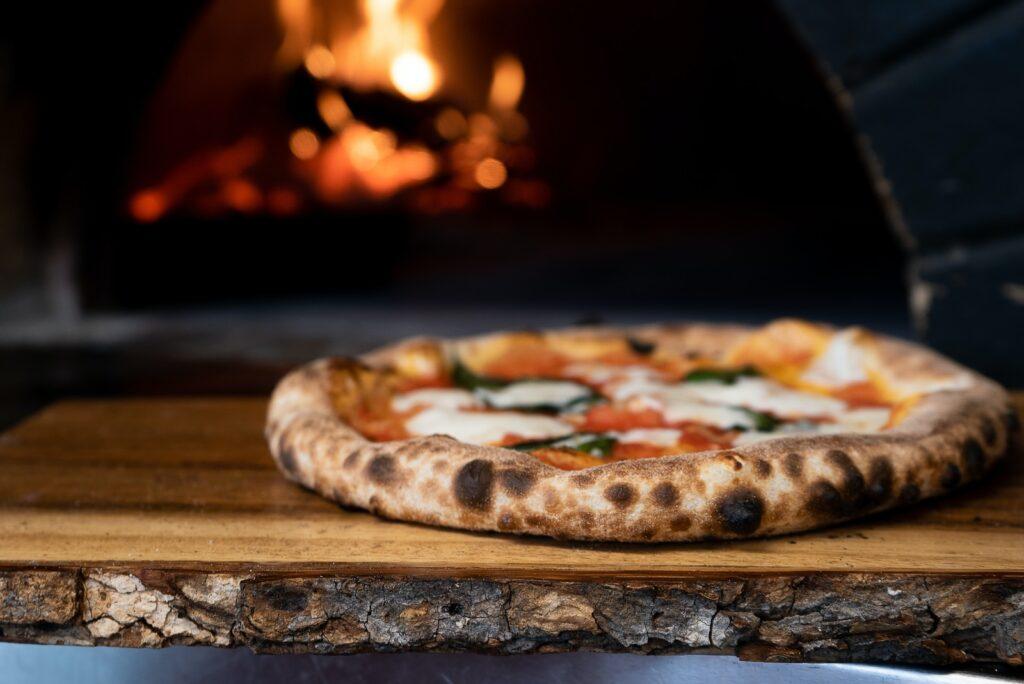
1. Superior Heat Distribution and High Temperatures
Outdoor pizza ovens are typically designed to reach much higher temperatures than indoor ovens. The intense heat generated by the oven’s fire or heating element, combined with its construction materials, allows for excellent heat distribution. This ensures that your pizza cooks quickly and evenly, resulting in a perfectly crispy crust and well-cooked toppings. The high temperatures also contribute to the unique smoky and charred flavors that are characteristic of wood-fired or outdoor pizza oven-cooked pizzas.
2. Authentic Pizza-Making Experience
Cooking pizzas in an outdoor pizza oven can provide an authentic and immersive pizza-making experience. Whether you’re using a wood-fired oven or a gas-powered oven, the process of tending to the fire, watching the pizza cook, and even the slight scent of wood smoke adds to the ambiance and enjoyment of the cooking process. It allows you to connect with the traditional methods of pizza-making and experience the satisfaction of crafting your own pizzas from scratch.
3. Versatility and Expanded Cooking Options
While the main focus of an outdoor pizza oven is cooking pizzas, it can also offer versatility for preparing other dishes. The high temperatures and even heat distribution of the oven make it suitable for cooking a variety of foods, including bread, roasted vegetables, meats, and even desserts. This expands your culinary possibilities and allows you to experiment with different recipes and flavors using the same outdoor oven.
4. Outdoor Gathering and Entertainment
Cooking pizzas in an outdoor oven adds an element of fun and social interaction to your gatherings. It creates a focal point and a gathering spot where friends and family can gather around, watch the pizzas cook, and engage in conversations. The process of making pizzas together and enjoying them fresh from the oven can create memorable experiences and foster a sense of community.
5. Reduced Heat and Odor in the Indoor Kitchen
Using an outdoor pizza oven helps to keep the heat and cooking odors outside, preventing them from lingering in your indoor kitchen. This is especially beneficial during hot summer months when using a traditional oven indoors can contribute to a stuffy and uncomfortable environment. Cooking pizzas outdoors allows you to enjoy the culinary experience without adding unnecessary heat and odors to your indoor living space.
6. Unique Flavor and Texture
The combination of high heat, even distribution, and the addition of wood smoke in wood-fired ovens imparts a unique flavor and texture to the pizzas. The quick cooking time and intense heat contribute to a crispy yet chewy crust with a hint of smokiness. This distinct flavor profile is often difficult to replicate in traditional indoor ovens, making outdoor pizza ovens a preferred choice for pizza enthusiasts who crave that authentic taste.
By utilizing an outdoor pizza oven, you can elevate your pizza-making experience, enjoy the benefits of high heat and even cooking, and create flavorful pizzas with a unique touch. In the next section, we will explore how to build your own outdoor pizza oven from scratch.
Building Your Own Outdoor Pizza Oven from Scratch
Building your own outdoor pizza oven can be a rewarding and fulfilling project that allows you to customize your oven to suit your needs and preferences. While it requires some planning and construction skills, the end result is a functional and enjoyable addition to your outdoor cooking space. Here are the general steps involved in building an outdoor pizza oven from scratch:
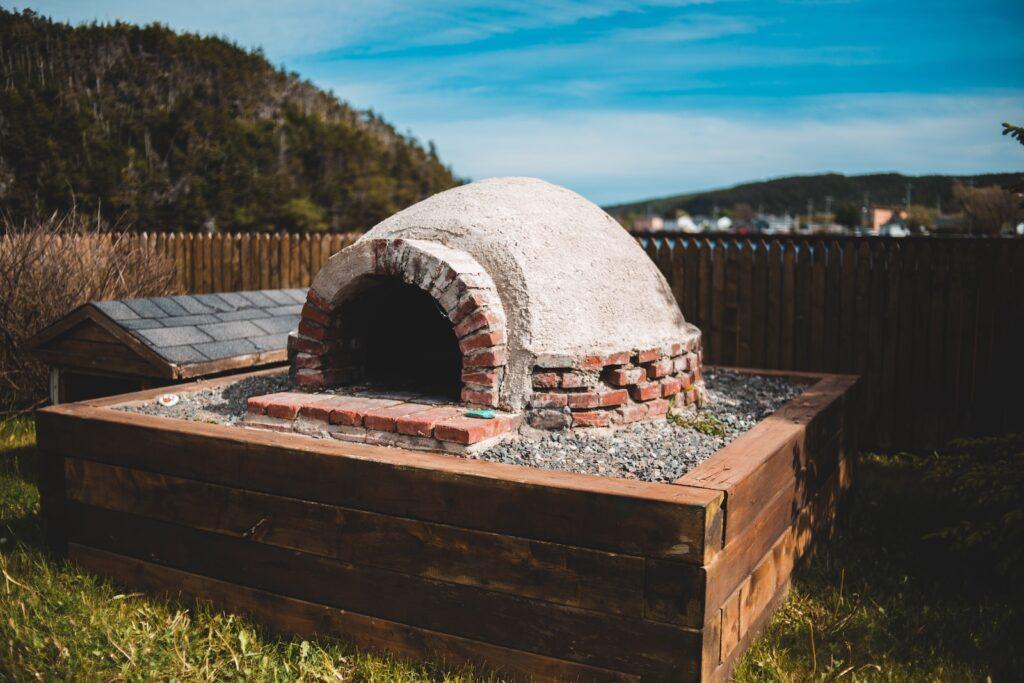
1. Design and Planning
- Choose the Oven Type: Decide on the type of oven you want to build, such as a brick oven, clay oven, or cob oven. Research the different materials and construction methods associated with each type to determine which one aligns with your vision and available resources.
- Select a Location: Find a suitable location for your outdoor pizza oven. Consider factors such as accessibility, proximity to your outdoor entertaining area, and safety regulations. Ensure there is enough space for the oven and any additional structures you may want to incorporate, such as a countertop or storage area.
- Gather Materials: Make a list of the materials you will need based on the chosen oven type. This may include bricks, refractory materials, mortar, insulation, and a chimney. Consult with local suppliers or online resources to source the materials.
2. Construction
- Build the Foundation: Start by constructing a sturdy and level foundation for your oven. This can be a concrete slab or a raised platform made of bricks or stone. Ensure it is well-supported to bear the weight of the oven.
- Construct the Oven Base: Build the base of the oven using bricks or other appropriate materials. This will provide stability and support for the oven chamber. Follow a plan or design to ensure the proper dimensions and structure.
- Build the Oven Chamber: Construct the walls of the oven chamber using refractory bricks or fireproof materials. Lay the bricks in a circular pattern, leaving an opening for the entrance. Use mortar to secure the bricks and create a solid structure.
- Insulation and Heat Retention: Apply insulation materials, such as ceramic fiber blanket or perlite mix, to the oven chamber. This helps retain heat and improves the oven’s efficiency.
- Install the Oven Door and Chimney: Install a sturdy oven door that can withstand high temperatures. Additionally, construct a chimney to allow for proper ventilation and smoke release.
- Finishing Touches: Complete any additional features you desire, such as a decorative outer layer, a countertop, or storage space for wood or utensils. Apply a protective sealant or finish to the oven to protect it from the elements.
3. Curing and Testing
- Curing Process: Before using your oven for cooking, it is essential to cure it properly. Gradually introduce heat to the oven, starting with small fires and gradually increasing the duration and intensity over several days. This process helps remove any excess moisture and strengthens the oven.
- Testing and Adjusting: Once the curing process is complete, test the oven’s performance by cooking a few pizzas. Monitor the temperature, heat distribution, and cooking times. Make any necessary adjustments to optimize the oven’s functionality.
It is important to note that building an outdoor pizza oven from scratch requires careful consideration of safety precautions and adherence to local building codes. Consulting with a professional or experienced builder can provide valuable guidance throughout the construction process.
By building your own outdoor pizza oven, you can create a unique and functional centerpiece for your outdoor entertaining area. The satisfaction of enjoying homemade pizzas cooked in an oven you constructed is a rewarding experience. In the next section, we will delve into reviews and comparisons of popular outdoor pizza oven brands and models.
Reviews and Comparisons of Popular Outdoor Pizza Oven Brands and Models
When it comes to outdoor pizza ovens, there are several reputable brands and models available on the market. Each brand offers unique features, construction materials, and cooking capabilities. Here, we provide a review and comparison of some popular outdoor pizza oven brands and models to help you make an informed decision:
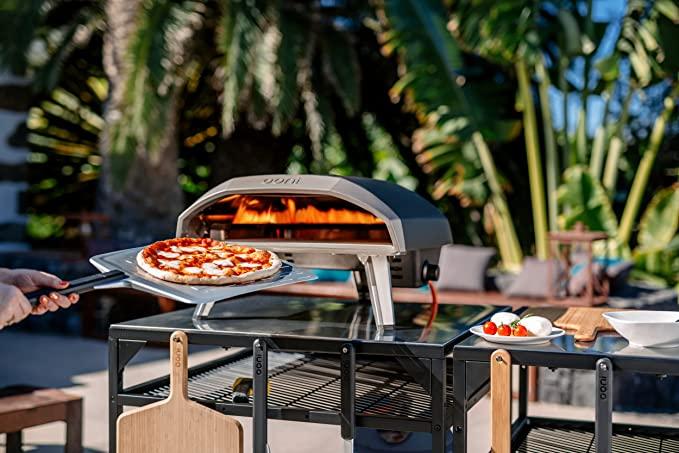
1. Ooni
- Ooni Pro: This versatile outdoor pizza oven is capable of reaching high temperatures and can accommodate various fuel types, including wood, charcoal, and gas. It offers excellent heat retention and has a spacious cooking surface, allowing you to cook multiple pizzas at once. The Ooni Pro is known for its portability, making it a popular choice for those who enjoy cooking outdoors.
- Ooni Koda: The Ooni Koda is a gas-powered outdoor pizza oven known for its ease of use and quick heating. It heats up in just 15 minutes and can reach temperatures of up to 932°F (500°C). The compact design and lightweight nature of the Ooni Koda make it highly portable and suitable for smaller outdoor spaces.
2. Roccbox
- Roccbox Pizza Oven: The Roccbox is a portable outdoor pizza oven that excels in heat retention and efficiency. It features a built-in thermometer and a unique rolling flame design, ensuring even heat distribution for perfectly cooked pizzas. The Roccbox is compatible with both gas and wood fuels, offering versatility in cooking options.
3. Alfa
- Alfa Forni 4 Pizze: This wood-fired outdoor pizza oven from Alfa Forni is designed to cook up to four pizzas simultaneously. It is made with refractory materials for excellent heat retention and durability. The Alfa Forni 4 Pizze is known for its rapid heat-up time and even cooking, producing authentic Neapolitan-style pizzas.
4. Blackstone
- Blackstone Outdoor Pizza Oven: The Blackstone outdoor pizza oven is a gas-powered oven that combines the convenience of gas cooking with the high heat needed for pizza-making. It features a large cooking surface, allowing you to cook multiple pizzas or other dishes simultaneously. The Blackstone oven also includes a rotisserie motor for cooking meats.
When choosing an outdoor pizza oven, consider factors such as cooking capacity, fuel type, heat retention, ease of use, and portability. Additionally, read customer reviews and compare prices to find the best option that suits your specific needs and budget.
Remember to always follow the manufacturer’s instructions and safety guidelines when operating an outdoor pizza oven. With the right choice of brand and model, you can enjoy delicious homemade pizzas cooked to perfection in your own outdoor pizza oven.
In the next section, we will explore how to troubleshoot common issues with outdoor pizza ovens, ensuring optimal performance and cooking results.
Troubleshooting Common Issues with Outdoor Pizza Ovens
Outdoor pizza ovens, like any other cooking appliance, may encounter occasional issues that can affect their performance. Understanding common problems and their solutions can help you troubleshoot and resolve any issues that arise. Here are some common issues you may encounter with outdoor pizza ovens and tips for troubleshooting them:
1. Temperature Fluctuations
- Issue: Your outdoor pizza oven experiences temperature fluctuations, making it difficult to maintain a consistent cooking temperature.
- Solution:
- Ensure proper insulation: Check if the oven has adequate insulation to retain heat. Insufficient insulation can lead to temperature fluctuations. Consider adding additional insulation or using materials that provide better heat retention.
- Monitor airflow: Verify that the oven’s vent and chimney are clear of any obstructions. Proper airflow is crucial for maintaining consistent temperatures.
- Manage the fire: Adjust the amount and arrangement of fuel (wood or charcoal) to control the fire’s intensity. Experiment with different fuel quantities and arrangements to find the optimal balance for even heat distribution.
2. Uneven Cooking
- Issue: Your pizzas are cooking unevenly, with some areas overcooked or undercooked.
- Solution:
- Rotate the pizza: During cooking, rotate the pizza periodically to ensure even exposure to the heat source. This helps prevent one side from cooking faster than the other.
- Optimize heat distribution: Position the pizzas closer to the heat source or move them away from hot spots within the oven. Experiment with different pizza placement to achieve more consistent cooking results.
- Use a pizza stone or baking steel: Placing a pizza stone or baking steel inside the oven helps distribute heat more evenly, resulting in a more uniform cooking process.
3. Ash or Soot Buildup
- Issue: Ash or soot accumulates inside the oven, affecting the cleanliness and performance of the pizza oven.
- Solution:
- Clean the oven regularly: After each use, remove any leftover ashes or debris from the oven. Use a brush or scraper to clean the cooking surface and interior walls.
- Control airflow: Adjust the oven’s vent and chimney to regulate the airflow. Proper airflow helps prevent excessive smoke and soot buildup.
- Burn off excess residue: Occasionally, build a hot fire in the oven to burn off any residual ash or soot. The intense heat will help clean the oven’s interior surfaces.
4. Insufficient Heat
- Issue: Your outdoor pizza oven struggles to reach the desired temperature, resulting in prolonged cooking times or undercooked pizzas.
- Solution:
- Check fuel quality: Ensure that the wood or charcoal you are using is dry and properly seasoned. Wet or damp fuel can hinder the heat production.
- Adjust the airflow: Increase the airflow by adjusting the vent and chimney openings. Sufficient oxygen supply is necessary for the fuel to burn effectively and generate heat.
- Allow for preheating: Ensure that the oven has sufficient time to preheat before cooking. Preheating allows the oven to reach the desired temperature and ensures consistent heat throughout the cooking process.
If troubleshooting these common issues does not resolve the problem, consult the manufacturer’s instructions or reach out to their customer support for further guidance. Proper maintenance and care, along with troubleshooting techniques, will help ensure optimal performance and enjoyable cooking experiences with your outdoor pizza oven.
In the final section, we will provide tips for using your outdoor pizza oven to cook other dishes beyond pizzas.
Tips for Using Your Outdoor Pizza Oven to Cook Other Dishes
While outdoor pizza ovens are primarily designed for cooking delicious pizzas, they can also be utilized to prepare a variety of other mouthwatering dishes. Here are some tips for using your outdoor pizza oven to cook other dishes, expanding the versatility of your oven:
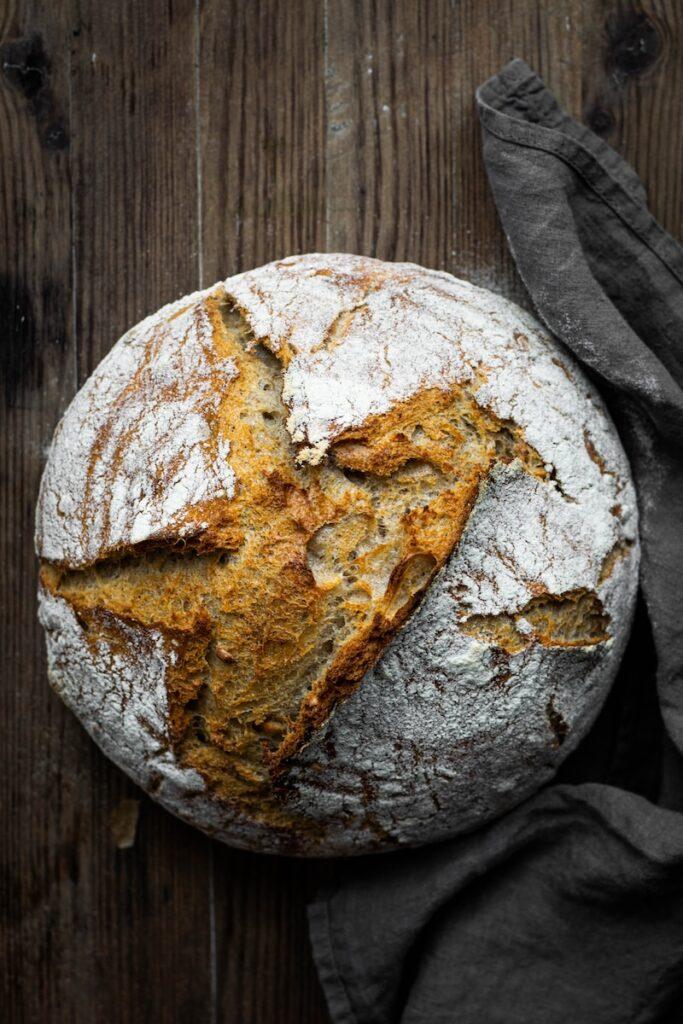
1. Bread
Take advantage of the high temperatures in your outdoor pizza oven to bake fresh bread with a crispy crust and a soft, fluffy interior. Prepare your dough, shape it into loaves or rolls, and place them directly on the oven floor or on a pizza stone. The intense heat will help create the desirable oven spring and give your bread a delightful golden brown crust.
2. Roasted Vegetables
Roasting vegetables in an outdoor pizza oven can impart a smoky flavor and caramelization that elevates their taste. Toss your favorite vegetables with olive oil, salt, and herbs, and place them in a roasting pan or directly on the oven grates. Cook until they are tender and slightly charred, allowing the natural flavors to shine.
3. Meats
Utilize the intense heat of your outdoor pizza oven to sear and cook meats to perfection. Whether it’s steak, chicken, or even whole roasted pig, the high temperatures will help lock in the juices and create a beautiful crust. Use a meat thermometer to ensure your meats are cooked to the desired doneness.
4. Desserts
Surprise your guests with delectable desserts cooked in your outdoor pizza oven. From fruit crisps and cobblers to wood-fired pies, the oven’s heat will add a unique touch to your sweet treats. Experiment with different recipes and watch as the desserts bake to golden perfection, infused with subtle smoky flavors.
5. Casseroles and Baked Dishes
Expand your cooking repertoire by preparing casseroles and baked dishes in your outdoor pizza oven. Lasagnas, gratins, and baked pasta dishes can benefit from the even heat distribution and intense flavors that the oven provides. Simply transfer your prepared casserole or dish to an oven-safe container and cook it in the outdoor oven until bubbling and golden.
6. Flatbreads and Pita
Enjoy the simplicity and versatility of cooking flatbreads and pitas in your outdoor pizza oven. Roll out your dough, add your favorite toppings or fillings, and bake them directly on the oven floor or on a pizza stone. The high temperatures will quickly cook the bread, resulting in a light and crispy base.
Remember to adjust cooking times and temperatures according to the specific dish you are preparing. Experiment with different ingredients and recipes to discover the full potential of your outdoor pizza oven beyond pizzas.
In conclusion, your outdoor pizza oven can be a multi-purpose cooking tool, allowing you to explore a world of culinary delights. From bread and roasted vegetables to meats and desserts, embrace the versatility of your oven and let your creativity soar.
Wrapping It All Up
In conclusion, outdoor pizza ovens offer a unique and enjoyable way to cook delicious pizzas and expand your culinary repertoire. We explored various aspects of outdoor pizza ovens, from seasoning and maintenance to achieving the perfect crust and toppings. We also delved into choosing the right dough and toppings, comparing Neapolitan-style and American-style pizzas, and understanding the benefits of outdoor pizza ovens compared to traditional indoor ovens.
For those who enjoy hands-on projects, we provided a guide on how to build your own outdoor pizza oven from scratch, emphasizing the importance of design, planning, and proper construction techniques. We also reviewed and compared popular outdoor pizza oven brands and models to assist you in making an informed purchasing decision.
To ensure optimal performance, we discussed troubleshooting common issues such as temperature fluctuations, uneven cooking, ash buildup, and insufficient heat. By following the suggested solutions, you can overcome these challenges and continue enjoying exceptional cooking experiences with your outdoor pizza oven.
Additionally, we highlighted the versatility of outdoor pizza ovens by providing tips for using them to cook other dishes like bread, roasted vegetables, meats, desserts, and casseroles. Exploring these possibilities allows you to make the most of your outdoor cooking space and delight your guests with a variety of flavors.
Whether you choose a pre-built outdoor pizza oven or decide to embark on a DIY project, the joy of creating homemade pizzas and experimenting with different recipes is unparalleled. The combination of heat, fire, and the open-air ambiance adds a distinct character to the cooking process, resulting in pizzas that are truly exceptional.
So, gather your ingredients, fire up your outdoor pizza oven, and let your culinary creativity take flight. Whether it’s a traditional Margherita or an innovative flavor combination, the satisfaction of enjoying a freshly baked pizza from your outdoor oven is sure to bring delight to your family and friends.
Now that you are equipped with knowledge on seasoning, maintenance, best practices, dough selection, and troubleshooting, it’s time to unleash your inner pizzaiolo and savor the delectable creations that await you in your outdoor pizza oven. Happy cooking!
Frequently Asked Questions (FAQs)
Here are some frequently asked questions related to outdoor pizza ovens and their various aspects:
How long does it take to season an outdoor pizza oven?
The seasoning process for an outdoor pizza oven typically takes around 3 to 5 hours. However, it’s recommended to consult the specific instructions provided by the manufacturer.
How often should I clean my outdoor pizza oven?
It’s a good practice to clean your outdoor pizza oven after each use. Remove any ash or debris, clean the cooking surface, and ensure proper airflow for optimal performance.
What type of wood is best for a wood-fired pizza oven?
Hardwoods such as oak, maple, beech, or fruitwoods like apple or cherry are commonly used for wood-fired pizza ovens. Avoid softwoods like pine or cedar as they can release excessive smoke and impart unwanted flavors.
What is the ideal temperature for cooking pizzas in an outdoor pizza oven?
The ideal temperature for cooking pizzas in an outdoor pizza oven ranges from 700°F to 900°F (370°C to 480°C). This high heat allows for fast and crispy cooking, resulting in authentic Neapolitan-style pizzas.
Can I use a gas-powered outdoor pizza oven to achieve the same results as a wood-fired oven?
While gas-powered ovens can provide convenience and consistent heat, the distinct smoky flavors imparted by a wood-fired oven are difficult to replicate. However, gas ovens can still produce delicious pizzas with their high heat capabilities.
How do I prevent my pizza dough from sticking to the peel?
To prevent sticking, lightly dust your pizza peel with flour or cornmeal before placing the dough on it. This creates a barrier between the dough and the peel, making it easier to slide the pizza into the oven.
Can I cook other dishes simultaneously while cooking pizzas in the outdoor oven?
Yes, outdoor pizza ovens can be used to cook various dishes simultaneously. Utilize the available space to cook bread, roasted vegetables, meats, and even desserts alongside your pizzas. Just ensure proper temperature management and cooking times for each dish.
How can I troubleshoot temperature fluctuations in my outdoor pizza oven?
Temperature fluctuations can be caused by inadequate insulation, airflow issues, or improper fuel management. Ensure proper insulation, check for obstructions in the vent and chimney, and adjust the amount and arrangement of fuel to maintain consistent temperatures.
Is it necessary to preheat an outdoor pizza oven before cooking?
Yes, preheating is essential for an outdoor pizza oven. It allows the oven to reach the desired cooking temperature, ensures even heat distribution, and helps achieve optimal cooking results.
Can I use my outdoor pizza oven in cold weather or during the winter?
Yes, outdoor pizza ovens can be used in cold weather or during the winter. However, colder temperatures may require additional fuel and longer preheating times to maintain the desired cooking temperature.
Remember, these are general FAQs, and it’s always recommended to refer to the specific instructions and guidelines provided by the manufacturer of your outdoor pizza oven for the best results and safe operation.
Amazon and the Amazon logo are trademarks of Amazon.com, Inc, or its affiliates.

